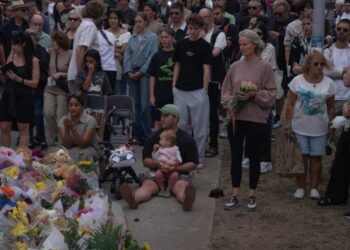Marjorie Taylor Greene says ‘dam is breaking’ within GOP against Trump
Rep. Marjorie Taylor Greene (R-Georgia) on Tuesday said President Donald Trump has “real problems” within the Republican Party, adding in...
Chile Is Swerving to the Right — and Into the Past
General Augusto Pinochet, the strongman who imposed a reign of terror on Chile from 1973 to 1990, must be smiling...
Grief Mixes With Anger at Funeral of Rabbi Killed in Bondi Beach Attack
Hundreds of mourners streamed into the Chabad of Bondi synagogue on Wednesday morning, some wiping away tears or audibly sobbing....
Nick Reiner Surrenders to Police After Being Surrounded in Newly Released Arrest Footage
Nick Reiner’s arrest was captured by security footage — and showed the moment police descended on Rob and Michele Reiner‘s...
Thieves snatch 40-foot inflatable Santa from family-owned Christmas tree lot
A group of Grinchy thieves managed to snatch a 40-foot-tall and 20-foot-wide inflatable Santa Claus from a family-owned Christmas tree...
Exclusive: Palantir alums using AI to streamline patent filing secure $20 million in Series A venture funding
Two former Palantir employees hoping to use AI to transform the process for filing and managing patents have secured $20...
Scouted: FlavCity Makes Protein Powders That Are Actually Really Delicious
Most protein powders suffer from three main issues: confusing ingredients, difficulty mixing, and weird aftertastes. FlavCity has tackled all three...
Google DeepMind CEO Demis Hassabis says some AI startups are wildly overpriced — and a correction is coming
Demis Hassabis says some AI startups are raising tons of money before they've built anything — and he warns a...
Australia Begins Burying Victims of Bondi Shooting
Australia began burying the victims of Sunday’s mass shooting at Bondi Beach on Wednesday, as authorities said they were gearing...
Nick Reiner charged with murder in killing of parents
Nick Reiner was charged with the murder of his parents, Los Angeles County District Attorney Nathan Hochman announced Tuesday, two...














